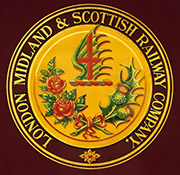

This site uses non-intrusive cookies to enable us to provide a better user experience for our visitors. No personal information is collected or stored from these cookies. The Society's policy is fully explained here. By continuing to use this site you are agreeing to the use of cookies.

Twenty-three years ago 35 separate railway systems were amalgamated into one, and the London Midland and Scottish Railway Company came into existence. The new undertaking was, and still is, the largest commercial enterprise in this country. An immense task then faced the men whose duty it was to weld this vast undertaking into a whole, to give it the spirit of public service, and to lay down the policy and standards for the creation of efficient public transport. It was obvious from the first that it would take 10 to 20 years and much patience before success could crown their efforts; many of them could not hope to see their plans come to fruition; they had to see that the lines of development were well laid. This is the tradition and continuity of the railway service.
To-day, we are facing in Britain a future of great change; immense problems require to be solved if liberty and the common weal and efficient transport are to be served. All the skill and practical experience which this country can command will be needed. The moment is opportune, therefore, to review the methods applied and the results achieved in the creation of the L.M.S., so that this record of largest-scale organisation and management may be available to those who will have the task of carrying on the work.
Site contents Copyright © LMS Society, 2025

December 7th, 2025
Site contents Copyright © LMS Society, 2025